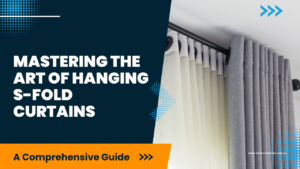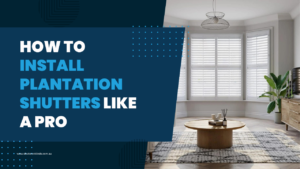PVC Plantation Shutters vs Timber

Introduction
Enhancing the aesthetics and functionality of your home starts with selecting the right window treatments. PVC and timber plantation shutters are popular options, each with its own set of advantages and drawbacks. In this comprehensive comparison, we’ll explore the nuances of these materials to assist you in making the best choice for your living space.



Material Composition
Understanding Material Composition:
- PVC plantation shutters are crafted from polyvinyl chloride, a synthetic plastic material known for its durability and resistance to moisture and humidity.
- Timber plantation shutters are made from natural wood, offering a classic and timeless appeal with options like basswood, cedar, or hardwood varieties.
- PVC is often preferred for its affordability and low maintenance, while timber exudes warmth and authenticity, enhancing the ambiance of any room.
TALK TO OUR EXPERT
We can connect you with our window blinds expert.
Durability
Evaluating Durability:
- PVC plantation shutters are highly durable and resistant to warping, cracking, and fading, making them ideal for high-moisture areas like bathrooms and kitchens.
- Timber plantation shutters, while naturally robust, may require periodic maintenance such as sanding and refinishing to prevent wear and tear from prolonged exposure to sunlight and moisture.
- Consider the longevity and resilience of each material against factors like climate, humidity levels, and exposure to UV rays when assessing durability.
Maintenance
Comparing Maintenance Requirements:
- PVC plantation shutters are easy to clean with a damp cloth and require minimal upkeep beyond occasional dusting, making them suitable for busy households.
- Timber plantation shutters may demand more attention, including regular dusting, polishing, and refinishing to maintain their appearance and structural integrity over time.
- Factor in the time and effort required for maintenance when deciding between PVC and timber shutters for your home.
Cost-effectiveness
Analyzing Cost-effectiveness:
- PVC plantation shutters are typically more budget-friendly upfront, offering an affordable alternative to timber without compromising on quality or aesthetics.
- Timber plantation shutters, while initially pricier, may prove cost-effective in the long run due to their durability and potential to increase property value.
- Consider your budget constraints and long-term investment goals when evaluating the cost-effectiveness of PVC versus timber shutters.
Environmental Impact
Assessing Environmental Sustainability:
- PVC plantation shutters, being synthetic, raise concerns regarding environmental impact and sustainability, as they are derived from non-renewable resources and may not be easily recyclable.
- Timber plantation shutters, sourced from sustainably managed forests or reclaimed wood, offer a more eco-friendly option with lower carbon footprint and potential for recycling or repurposing.
- Prioritize environmentally responsible materials and manufacturing practices to minimize your ecological footprint when selecting plantation shutters for your home.
Aesthetics
Considering Visual Appeal:
- PVC plantation shutters come in a variety of colors and finishes, offering versatility to match any decor style or color scheme with a modern and sleek appearance.
- Timber plantation shutters exude natural beauty and warmth, enhancing the ambiance of any room with their rich textures and grain patterns, creating a timeless and elegant look.
- Reflect on your design preferences and aesthetic goals to choose between the contemporary allure of PVC or the classic charm of timber shutters for your living space.
Comparison Table: PVC vs Timber Plantation Shutters
| Aspect | PVC Plantation Shutters | Timber Plantation Shutters |
| Material Composition | Made from polyvinyl chloride (PVC), a synthetic plastic material known for its durability and resistance to moisture. | Crafted from natural wood, offering a classic and timeless appeal with options like basswood, cedar, or hardwood varieties. |
| Durability | Highly durable and resistant to warping, cracking, and fading. Ideal for high-moisture areas like bathrooms and kitchens. | Robust but may require periodic maintenance such as sanding and refinishing to prevent wear and tear from prolonged exposure to sunlight and moisture. |
| Maintenance Requirements | Easy to clean with a damp cloth and require minimal upkeep beyond occasional dusting. Suitable for busy households. | May demand more attention, including regular dusting, polishing, and refinishing to maintain appearance and structural integrity over time. |
| Cost | Typically more budget-friendly upfront, offering an affordable alternative to timber without compromising on quality or aesthetics. | Initially pricier but may prove cost-effective in the long run due to durability and potential to increase property value. |
| Environmental Impact | Raise concerns regarding environmental impact and sustainability, derived from non-renewable resources and may not be easily recyclable. | Offer a more eco-friendly option with lower carbon footprint and potential for recycling or repurposing when sourced from sustainably managed forests or reclaimed wood. |
| Aesthetics | Come in a variety of colors and finishes, offering versatility to match any decor style with a modern and sleek appearance. | Exude natural beauty and warmth, enhancing the ambiance of any room with rich textures and grain patterns, creating a timeless and elegant look. |
Conclusion
In conclusion, the decision between PVC and timber plantation shutters hinges on various factors, including material composition, durability, maintenance requirements, cost-effectiveness, environmental impact, and aesthetics. By carefully weighing these considerations and prioritizing your preferences and priorities, you can select the ideal window treatment that enhances the beauty and functionality of your home for years to come.







